
Carlo Agostino Fabroni (28 August 1651 - 19 September 1727) was an Italian Roman Catholic cardinal. [1]

Carlo Agostino Fabroni (28 August 1651 - 19 September 1727) was an Italian Roman Catholic cardinal. [1]
Born in Pistoia to a comfortable family, his studies led him to join the Jesuits. In 1706, he was made cardinal by Pope Clement XI. He became a close advisor and secretary of the Office of Propaganda Fide for Pope Innocent XII. From the latter position, along with the scholar Gregorio Selleri, he coauthored a censure of Jansenism and the writings of Pasquier Quesnel. The censure was released in 1713 by Clement XI under the title of Bolla Unigenitus Dei Filius . He was the head of the conservative zelanti faction. [2]
Before his death, he built the Biblioteca Fabroniana in Pistoia to house his donation of 8000 volumes. [3] [4] He died in Rome.

Pope Clement XI, born Giovanni Francesco Albani, was head of the Catholic Church and ruler of the Papal States from 23 November 1700 to his death in March 1721.

Pope Clement XII, born Lorenzo Corsini, was head of the Catholic Church and ruler of the Papal States from 12 July 1730 to his death in February 1740.

Pope Leo XI, born Alessandro Ottaviano de' Medici, was head of the Catholic Church and ruler of the Papal States from 1 April 1605 to his death, on 27 April 1605. His pontificate is one of the briefest in history, having lasted under a month. He was from the prominent House of Medici originating from Florence. Medici's mother opposed his entering the priesthood and sought to prevent it by having him given secular honours, but after her death he eventually was ordained a priest in 1567. In his career he served as Florence's ambassador to the pope, Bishop of Pistoia, Archbishop of Florence, Papal legate to France, and as the cardinal Prefect for the Congregation of Bishops and Regulars. He was elected to the papacy in the March 1605 papal conclave and served as pope for 27 days.
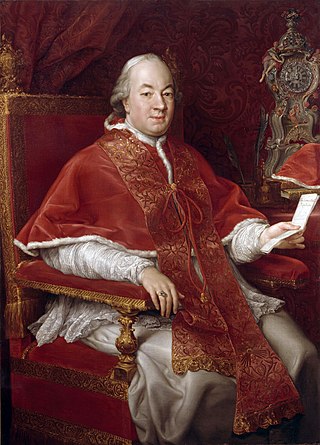
Pope Pius VI was head of the Catholic Church and ruler of the Papal States from 15 February 1775 to his death in August 1799.
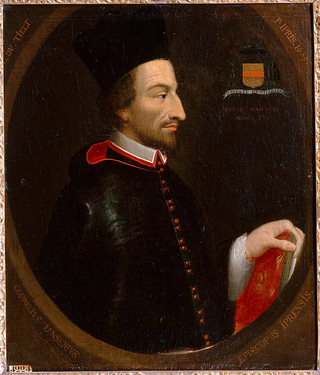
Jansenism was an early modern theological movement within Catholicism, primarily active in the Kingdom of France, that arose in an attempt to reconcile the theological concepts of free will and divine grace. Jansenists claimed to profess the true doctrine of grace as put forth by Augustine of Hippo. In 1653, Pope Innocent X promulgated the bull Cum occasione, which condemned five errors attributed to Jansenism, including the idea that Christ did not die or shed his blood for all men.
Unigenitus is an apostolic constitution in the form of a papal bull promulgated by Pope Clement XI in 1713. It opened the final phase of the Jansenist controversy in France. Unigenitus censured 101 propositions of Pasquier Quesnel as:
false, captious, ill-sounding, offensive to pious ears, scandalous, pernicious, rash, injurious to the Church and its practices, contumelious to Church and State, seditious, impious, blasphemous, suspected and savouring of heresy, favouring heretics, heresy, and schism, erroneous, bordering on heresy, often condemned, heretical, and reviving various heresies, especially those contained in the famous propositions of Jansenius.

Charles-Thomas Maillard de Tournon, also known as Carlo Tommaso, was a papal legate and cardinal to the East Indies and China.

Christian August of Saxe-Zeitz, was a German prince of the House of Wettin. He was also a cardinal of the Roman Catholic Church.
Francesco Martelli was an Italian Roman Catholic Cardinal.

The 1721 papal conclave, convoked after the death of Pope Clement XI, elected Cardinal Michelangelo de' Conti, who took the name of Innocent XIII.
Vineam Domini Sabaoth is an apostolic constitution in the form of a papal bull promulgated by Pope Clement XI in 1705 which declared that "obediential silence" is not a satisfactory response to the Formula of Submission for the Jansenists.

Antonio Pucci was a Cardinal of the Catholic Church.
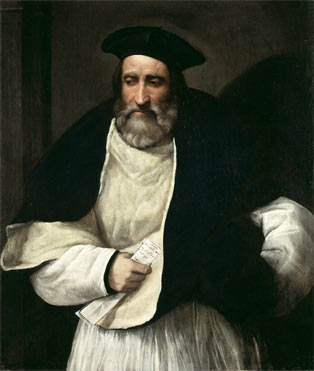
Lorenzo Pucci was an Italian cardinal and bishop from the Florentine Pucci family. His brother Roberto Pucci and his nephew Antonio Pucci also became cardinals.

Bandino Panciatici was a Roman Catholic cardinal from 1690 to 1718.

Marcantonio Barbarigo was an Italian cardinal of the Roman Catholic Church. He was the founder of the Pontifical Institute of the Religious Teachers Filippini and also founded both the Religious Teachers Filippini of Montefiascone and the Augustinian Sisters of Divine Love. He was the great-uncle of Pope Clement XIII and was a relative of Gregorio Barbarigo.
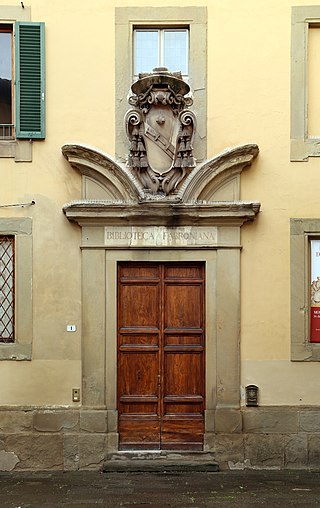
The Biblioteca Fabroniana is a public library, founded in 1726, and located on Piazzetta San Filippo #1 in Pistoia, region of Tuscany, Italy.

Giacomo or Jacopo Rospigliosi was an Italian Roman Catholic cardinal.
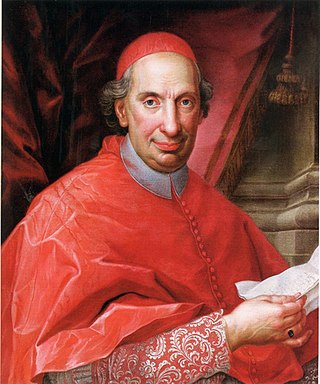
Antonio Banchieri was an Italian cardinal.

Celio Piccolomini (1609–1681) was a Roman Catholic cardinal.

Lorenzo Casoni was a Roman Catholic cardinal.